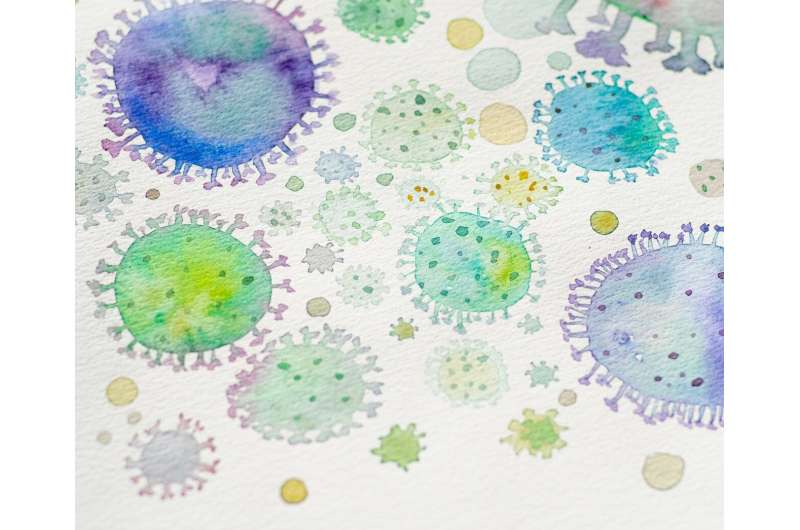Most COVID-19 infections are spread through respiratory droplets or aerosols and not surfaces: study

COVID-19 is spread most often through respiratory droplets or aerosols and little evidence exists supporting transmission through surfaces. As such, social distance and proper ventilation are key determinants of transmission risk. Findings from a review of published research, articles, and reports is published in Annals of Internal Medicine.
Researchers from Montefiore Medical Center, Hospital of the University of Pennsylvania, Massachusetts General Hospital, Harvard Medical School, and Brigham and Women's Hospital studied scientific articles published between January and September 2020, as well as relevant articles and institutional or governmental reports, to determine the viral, host, and environmental factors that contribute to transmission of COVID-19. They found that although several experimental studies suggest that virus particles could live for hours after inoculation in aerosols or on surfaces, the real-world studies that detect viral RNA in the environment report very low levels on surfaces, and few have isolated viable virus. Strong evidence from case and cluster reports indicates that respiratory transmission is dominant, with proximity and ventilation being key determinants of transmission risk. In the few cases where direct contact or transmission from materials or surfaces was presumed, respiratory transmission could still not be ruled out.
The researchers also identified patterns in virus transmission. The evidence showed that COVID-19 virus peaks around a day before symptom onset and declines within a week of symptom onset. All transmissions occur early on and none have ever been documented after a patient has had symptoms for about a week. Most persons do not transmit the virus, whereas some cause many secondary cases in transmission clusters called "superspreading events." According to the authors, their findings should help to inform evidence-based policies and practices to help educate the public and slow the spread of this virus.
More information: Eric A. Meyerowitz et al. Transmission of SARS-CoV-2: A Review of Viral, Host, and Environmental Factors, Annals of Internal Medicine (2020). DOI: 10.7326/M20-5008


















